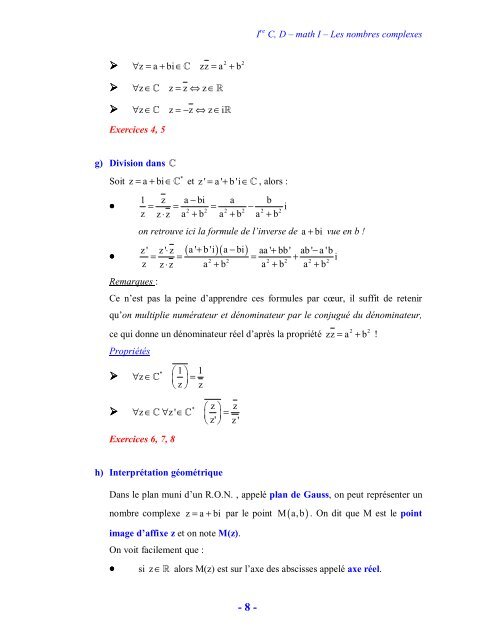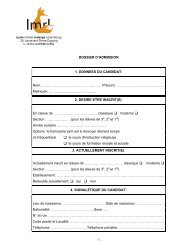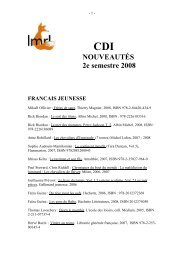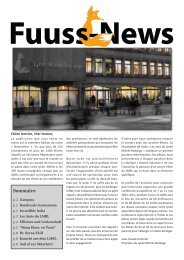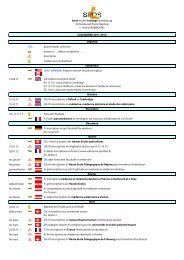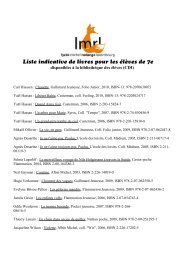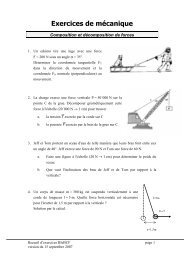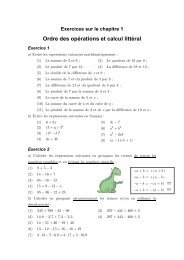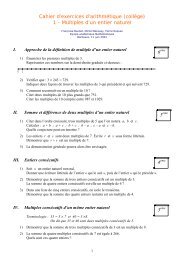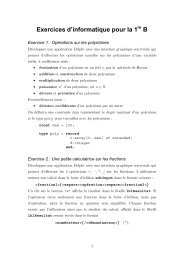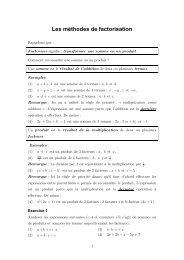Create successful ePaper yourself
Turn your PDF publications into a flip-book with our unique Google optimized e-Paper software.
I re C, D – math I – <strong>Les</strong> <strong>nombres</strong> <strong>complexes</strong><br />
2 2<br />
∀ z = a + bi∈ C zz = a + b<br />
∀z ∈ C z = z ⇔ z ∈ R<br />
∀z ∈ C z = −z ⇔ z ∈iR<br />
Exercices 4, 5<br />
g) Division dans C<br />
Soit<br />
z a bi<br />
*<br />
= + ∈C et z ' a ' b 'i<br />
= + ∈ C , alors :<br />
1 z a − bi a b<br />
z z ⋅z<br />
a + b a + b a + b<br />
• = = = −<br />
2 2 2 2 2 2<br />
•<br />
Remarques :<br />
on retrouve ici la formule de l’inverse de a<br />
( a ' + b'i)( a − bi)<br />
i<br />
+ bi vue en b !<br />
z ' z ' ⋅ z aa ' + bb' ab ' − a 'b<br />
= = = +<br />
2 2 2 2 2 2 i<br />
z z ⋅ z a + b a + b a + b<br />
Ce n’est pas la peine d’apprendre ces formules par cœur, il suffit de retenir<br />
qu’on multiplie numérateur et dénominateur par le conjugué du dénominateur,<br />
ce qui donne un dénominateur réel d’après la propriété<br />
Propriétés<br />
* ⎛ 1 ⎞ 1<br />
∀z<br />
∈ C ⎜ ⎟ =<br />
⎝ z ⎠ z<br />
* ⎛ z ⎞ z<br />
∀z<br />
∈ C ∀z ' ∈ C ⎜ ⎟ =<br />
⎝ z' ⎠ z '<br />
Exercices 6, 7, 8<br />
2 2<br />
zz = a + b !<br />
h) Interprétation géométrique<br />
Dans le plan muni d’un R.O.N. , appelé plan de Gauss, on peut représenter un<br />
nombre complexe z = a + bi par le point M( a,b ) . On dit que M est le point<br />
image d’affixe z et on note M(z).<br />
On voit facilement que :<br />
• si z∈ R alors M(z) est sur l’axe des abscisses appelé axe réel.<br />
- 8 -


